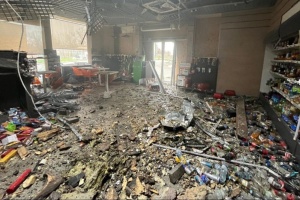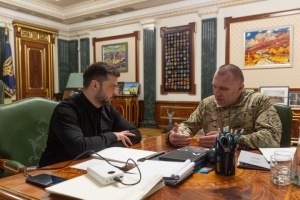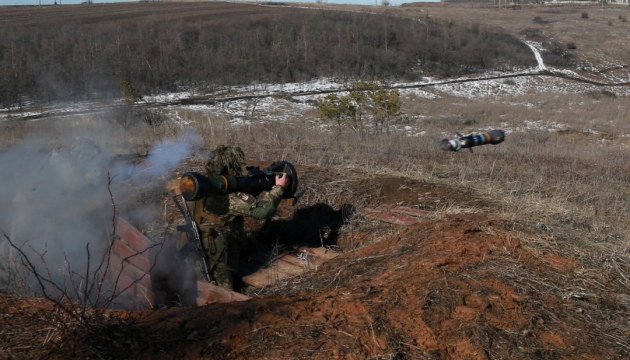
Why does the West need to intensify aid for Ukraine?
In the conditions of Russian aggression against Ukraine, which has been ongoing since 2014 and a full-scale invasion since 2022, the Ukrainian Defence Forces are experiencing this first-hand. The soldiers and officers of the Ukrainian Armed Forces, National Guard, Police, Border Forces, and Security Service are defending their country, sovereign territory, and citizens from Russian occupation at the cost of extreme effort.
The Centre for Strategic Communications and Information Security explains the role of an appropriate and timely provision of Western weapons and ammunition to Ukrainian soldiers, as well as why the efforts currently being made by our partners are no longer sufficient for quality changes on the battlefield.
Deserving to help
During the eight years of Russian aggression that preceded the full-scale invasion, the Armed Forces defended Ukraine, relying only on Soviet stocks of small arms, artillery, tanks and aircraft, and with a small share of the latest Ukrainian defence industry developments. Some Soviet equipment at the time of the full-scale invasion was already morally obsolete or out of its operational time.
On the eve of a full-scale invasion, Kyiv’s Western partners began to strengthen the Ukrainian army by providing small arms, portable anti-tank and anti-aircraft weapons, and ammunition for them, as well as light armoured vehicles. In fact, few Western military experts hoped for effective resistance in Ukraine and at most counted on the war transition into guerrilla warfare. These pessimistic expectations determined the volume and nomenclature of material and technical aid for Ukraine.
However, already in the first months of the full-scale invasion, at the end of winter and the beginning of spring 2022, Ukrainian soldiers dispelled the myth about the invincibility of the Russian army. It turned out that Russia was able to effectively fight only against countries much weaker than itself (Georgia), partisans (Ichkeria) and scattered paramilitary formations (Syria). In general, after 1991, Moscow resorted mainly to hybrid wars, achieving success without using all its military potential: in Moldova and Georgia in the 1990s, Ukraine during 2014-2022, and Middle East and African countries in the 2020s. When it was necessary to win quickly in an open full-scale war with a commensurate enemy, the Russian army failed.
In the first months, Ukrainian servicemen and volunteers, even with the help of old military equipment and light Western weapons, were able to defeat the Russian armoured columns, which were seriously determined to ‘’take Kyiv in three days.’’ With the help of a creative approach to defence planning, a combination of symmetric and asymmetric warfare, and the personal heroism of its soldiers, Ukraine was able to thwart the audacious enemy plans.
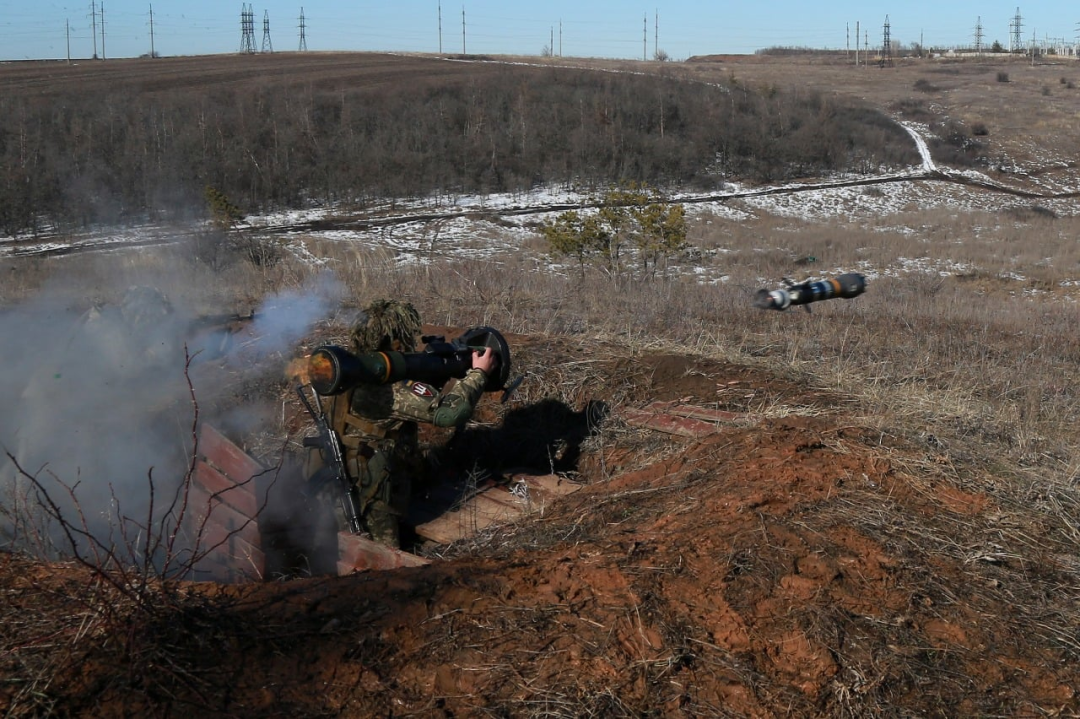
Ukrainian paratrooper training with an NLAW anti-tank system ahead of a full-scale invasion of Russia. Source: Joint Forces Group
However, unfortunately, due to insufficient forces and means at the very beginning of the full-scale invasion, Ukraine lost part of its territories. The northern regions, including the suburbs of Kyiv, were briefly occupied. The Russians captured large parts of the regions in the east and south. And this is not just a loss of territories, Ukraine suffered human losses. After the liberation of the Kyiv and Chernihiv regions, footage and evidence of mass murders in Bucha and other cities and towns were revealed to the whole world. The cities of Mariupol, Volnovakha, Popasna, Severodonetsk, and Rubizhne were wiped off the face of the earth, along with tens of thousands civilians. Those citizens, in the east and south of Ukraine, who survived hostilities, experienced an occupation regime accompanied by terror, torture, sexual violence, and the suppression of all possible rights and freedoms, from freedom of religion to the right to peaceful assembly.
Perhaps, if Ukraine had started receiving the full range of Western weapons, equipment, and ammunition even earlier, this could have been avoide. There is no conditional mode of action in history, but it is quite possible that the consequences would be much less tragic.
‘’Game changer’’ on the battlefield
With the invaders’ retreat from the north of Ukraine in April 2022, the Russian army began to adapt. The enemy command was clear that armoured column attacks will not solve the task of destroying the Ukrainian state (although relapses of attempts sometimes occur). Therefore, the Russian army relied on massive artillery fire, shelling of military and civilian objects, on planned offensive by infantry and tanks.
In this regard, Western aid with small arms and portable anti-tank and anti-aircraft weapons was no longer sufficient. To oppose the Russian offensive in the east and south of Ukraine, artillery and ammunition for it were needed in sufficient quantities to withstand the hurricane fire of enemy artillery. Also, the need for high-precision weapons, necessary for pinpoint damage to Russian military objects of particular importance, like command points and supply centres, has become especially urgent.
It is important to note that despite the functioning of the Ukrainian defence industry and production of the newest types of weapons and equipment, it could not and cannot fully cover the needs of a million-strong army, especially since industrial facilities are under constant missile strikes threat.
Then the ‘’game changer’’ was the supply of HIMARS and M270 rocket launcher systems. Thanks to Western aid, as well as the supply of a whole range of barrels and self-propelled artillery from the U.S., Western and Central Europe, as well as a creative approach in their use by Ukrainian soldiers, it was possible to disrupt Russian logistics and troop management in the near rear. This made possible brilliant operations to liberate most of the Kharkiv region and part of the Donetsk region in September 2022. On November 11, Ukraine liberated Kherson. These examples show how important timely material and technical assistance is, using which the Defence Forces of Ukraine are able to independently liberate large territories and citizens.
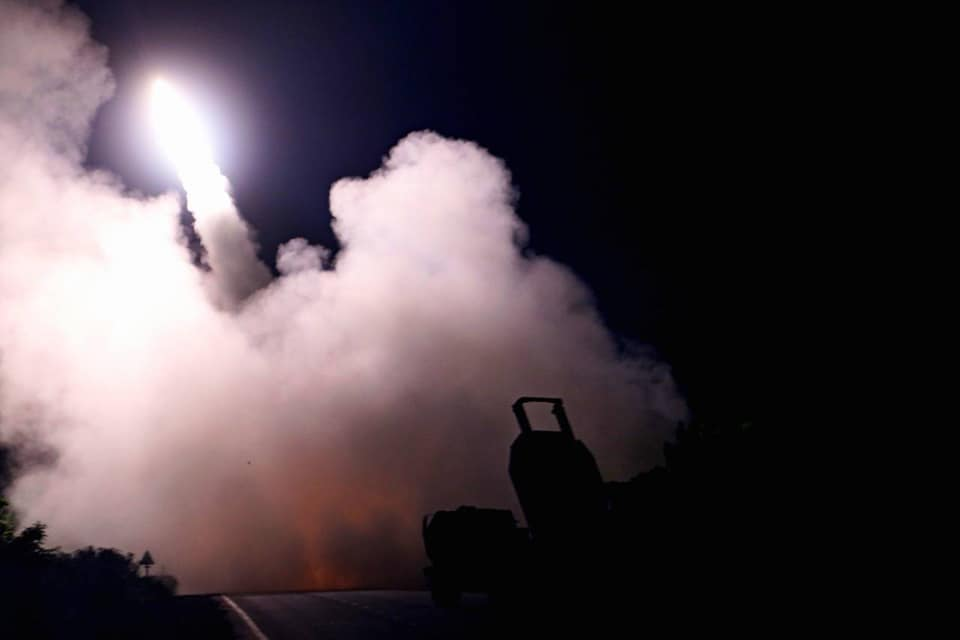
One of the first HIMARS MLRS combat applications in Zaporizhzhia region. Photo from the General Staff of the Armed Forces of Ukraine, July 4, 2022
Russia’s defeats forced its command to adapt, and a decision was made to carry out mobilization, which continues to this day. Increasing the size of the enemy’s army increased Ukraine’s need for Western military aid.
Starting in October 2022, Russia launched a massive air campaign targeting the Ukrainian energy system. The enemy hoped to demoralize Ukrainian citizens and force Ukraine to surrender. And although energy-generating facilities were damaged, and some Ukrainian cities and villages were forced to live without electricity for some time, the partners’ material and technical assistance made it possible to strengthen the Ukrainian Air Force and achieve serious success in repelling attacks, which gave Ukrainians the opportunity to survive the winter, even in difficult conditions.
Delays lead to tragedies
Western support for Ukraine has always caused irritation and a sharp reaction in Moscow. To stop the assistance flow, Russia resorts to a whole series of measures, from attempts to convince partners of the futility of efforts and fakes about the transfer of weapons into foreign hands (from Mexico to Hamas), to direct threats of escalation and even nuclear blackmail. The Kremlin constantly threatens the consequences of crossing imaginary ‘’red lines’’, starting from the moment when material and technical assistance was limited to small arms. However, these constant threats of Putin and his henchmen actually prove that the ‘’king is naked’’, because he is afraid that the full supply of the Ukrainian Defence Forces with modern weapons and their skilful use on all military objects, serving the aggression machine, will bring the Russian army to its knees.
The free world has partially learned to filter Russian propaganda about arms ammunition and military equipment aid. This is eloquently evidenced by the evolution of material and technical assistance (from small arms to artillery, tanks, long-range missiles and the announced transfer of F-16 aircraft). However, we must note that the partners still refer to the false argument about ‘’avoiding escalation’’, for example, in the issue of the Taurus cruise missiles transfer to Ukraine. Meanwhile, lingering doubts and delays have an extremely negative impact on the battlefield. And Ukraine’s failures fuel the aggressor’s appetites and excitements.
There are some specific examples from the last year of the war. Since 2022, there has been a great discussion in the West about the possibility of providing Ukraine with F-16 fighters, which are capable of eliminating Russian superiority in the air. The decision was finally made only in the summer of 2023, and the training of Ukrainian pilots began. Due to such a long delay, Ukrainian pilots have to fight in unequal conditions, and the field troops have not had full-fledged air support for the third year, being constantly attacked by missiles and guided aerial bombs. Many border and front-line cities were destroyed by Russian KABs.
While difficult discussions for the supply of Western-style tanks continued in 2022 and early 2023, fierce and bloody battles were in Bakhmut, Soledar and Vugledar, in which armoured support was sorely lacking. By the time, tanks finally arrived in Ukraine in 2023, Russia had already managed to build a powerful fortified line that slowed the Ukrainian counteroffensive in the south of Ukraine.
Critical for Ukraine was the inability of the U.S. Congress to pass the necessary $61 billion aid package for Ukraine within six months. The delay in the ammunition and weapons led to dramatic changes on the front line. On February 17, 2024, after bloody battles, the defenders had to retreat from Avdiivka, a front-line city that the Ukrainian army had defended for 10 years. The Russian army continues its offensive in the direction of Pokrovsk and Chasiv Yar in the Donetsk region. And on May 10, 2024, the enemy began an offensive from its territory to the north of the Kharkiv region. New battles for the city of Vovchansk, which has been liberated by the Defence Forces in 2022, are ongoing right now.
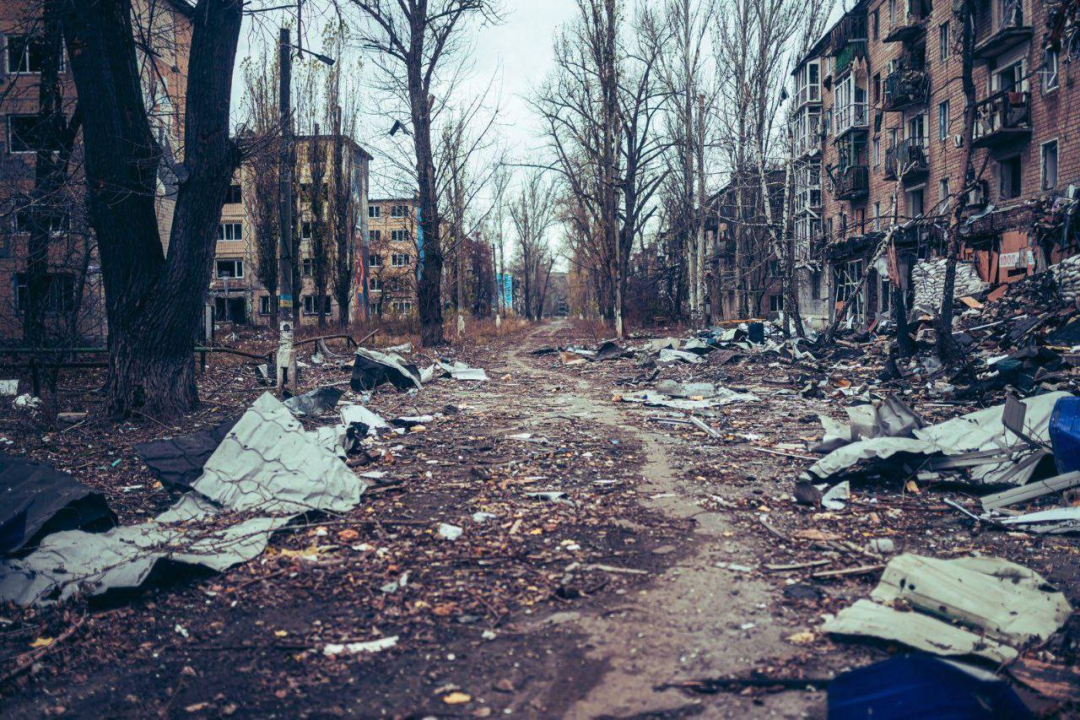
Ruined Avdiivka. The author of the photo is Commander of the Tavria operational-strategic group Oleksandr Tarnavskyi.
Cities and villages in the lane of the Russian offensive are turning into burnt-out ruins that cannot be restored. Terrifying news about Russian terror against civilians in the newly captured territories has already been recorded.
Since the end of March 2024, Russia has been conducting another missile campaign against the Ukrainian energy system, putting it in an extremely difficult position. Due to damage to energy-generating facilities, it was necessary to introduce restrictions on electricity consumption from May 14. This happened both because of the mass attacks and the missiles shortage for Western air defence systems.
Modern full-scale warfare requires a huge amount of ammunition, and meanwhile, Ukrainian soldiers have to save every shell. The ammunition supply delay is causing the Defence Forces avoidable human losses, cities are destroying, territories are occupying, and their inhabitants are in mortal danger.
Ukrainians understand the democratic processes and political discussions in Western countries, and are grateful to partners for any support. But our common cause requires intensified efforts. Totalitarian regimes make their criminal decisions quickly because they are not limited by such factors as public opinion and democratic control over the government, army, and special services. Dictatorships easily agree on the instant supply of missiles, ammunition, and drones to a friendly side. The free world must learn to respond to challenges no less decisively and quickly.
Time to raise stakes
In addition to the delays, another problem is the partners’ restrictions on the use of the weapons they have transferred.
Although some governments have already confirmed the right of Ukraine to strike Russian territory with weapons received from them, others still categorically do not agree with this. Since March 2024, discussions about whether Ukrainian attacks on Russian oil refineries are really necessary have been ongoing.
It is worth looking at the picture more broadly. International law and the UN Charter do not limit the right of states to self-defence when repelling military aggression. The Russian Federation territory has been used for aggression against Ukraine since 2014, and especially since 2022. Every day, planes take off from Russian airfields to bombard the Ukrainian military and civilians. There are military facilities on Russian territory ensuring aggression. Just now Russia attacks the Kharkiv region from its territory. And the permission to attack targets with Western weapons a meter from the state border on the Ukrainian side, and the prohibition to do the same a meter on the opposite side, look very strange.

Residents evacuating the border areas of Kharkiv region on May 12, 2024.
Oil refineries primarily serve the war machine. Fuel is an army body blood. Every hour, Russian refuellers pour this fuel into military vehicles, tanks, and planes that kill Ukrainians. And what is not poured into military equipment is exported outside of Russia in order to use the proceeds to finance the machine of war, terror, and propaganda. Today, aggression is carried out primarily against Ukraine. But tomorrow, it can be directed at any country in the free world. After all, the disinformation machine is already working against the free world. Attacks on Russia’s oil industry can bleed the aggressive war machine, bringing closer peace in Ukraine and security for the entire world.
Russia is raising the stakes in the war. It’s time for Ukraine’s partners to do the same. We have paid too high a price for the indecision, delay, and illusions of our friends that non-provocation and good will could be properly appreciated in Moscow. Just restoring the previously promised volumes of aid is not enough in order to make up for the six months delay. There is a need for new, brave decisions that will force the Kremlin to think seriously about the price of the aggression.
Center for Strategic Communication and Information Security



